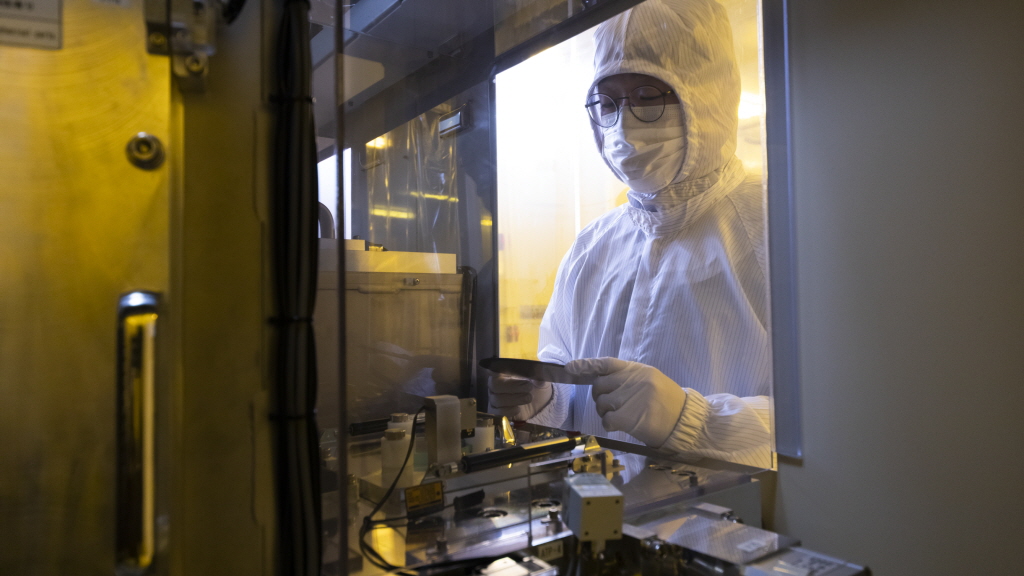한국전기연구원(KERI) 차세대반도체연구센터 서재화 박사팀이 우주 환경에서 탄화규소(SiC) 전력반도체 소자의 방사선 내성을 평가하고, 신뢰성을 확보하는 기술을 개발하며, 차세대 SiC 전력반도체의 우주 산업에서의 적용이 기대된다.
방사선 내성 평가 기술 개발, 고에너지 우주 환경 모사 분석 신뢰성 확보
한국전기연구원(KERI)이 국내 최초로 고에너지 우주 환경을 모사 분석해 국제적으로 신뢰성을 확보한 방사선 내성 평가 기술을 개발하며, 차세대 SiC 전력반도체의 우주 산업에서의 적용이 기대된다.
전기연구원 차세대반도체연구센터 서재화 박사팀이 우주 환경에서 탄화규소(SiC) 전력반도체 소자의 방사선 내성을 평가하고, 신뢰성을 확보하는 기술을 개발했다고 17일 밝혔다.
전력반도체는 전기·전자기기의 핵심 부품으로, 전류 방향을 조절하고 전력 변환을 제어하는 등 사람의 몸으로 치면 근육과도 같은 역할을 한다. 현재 전기차를 비롯해 우주 환경에서의 전력반도체 소재로는 실리콘(Si)이 가장 많이 활용되지만, 차세대 주자로는 탄화규소(SiC), 다이아몬드(Diamond) 등 높은 성능과 내구성을 지닌 ‘와이드밴드갭(WBG) 전력반도체’가 큰 주목을 받고 있다.
우주 방사선은 항공기나 탐사선(로버), 위성 등에 탑재되는 전력반도체의 전기적 특성을 심각하게 저하시키는 원인으로 손꼽힌다. 국제적으로도 미국과 유럽을 중심으로 방사선 영향 연구를 진행하고 있지만, 우리나라는 아직 실리콘 전력반도체 단계에서 방사선 내성을 정량적으로 분석하는 수준에 머물고 있고, 연구 결과물도 한계가 많았다.
이에 KERI는 국내 최초로 고에너지 우주 환경 모사를 통해 SiC 전력반도체의 방사선 내성을 효과적으로 평가하는 데 성공했다. 가장 중요했던 것은 극한 우주 방사선 실험 환경을 구현하는 것이었다. 우주 방사선은 다양한 에너지 대역의 입자들로 구성되어 있고, 그중 양성자(proton)가 80∼90%를 차지한다. 이에 서재화 박사팀은 한국원자력연구원이 보유한 가속기 시설의 고에너지 양성자(100 MeV)를 활용했고, 정확한 방사선 조사 조건을 구현하기 위해 해당 분야 전문가인 국립경국대 윤영준 교수팀과 협업했다.
이러한 우주 환경 조건에서 KERI는 직접 국산화 개발한 SiC 전력반도체의 전압 변화, 피폭으로 인한 누설 전류 증가 및 격자 손상 등 영향성을 체계적으로 분석했다. 이를 기반으로 데이터를 다수 축적했고, 실제 우주 부품으로 SiC 전력반도체가 사용될 때의 장기적인 신뢰성을 보장할 수 있는 설계 기준도 마련할 수 있었다. 관련 연구결과는 우수성을 인정 받아 핵·방사화학 분야 SCI급 국제 저널인 ‘Radiation Physics and Chemistry’에 논문이 최근 게재(상위 8.7%)되기도 했다.
KERI 서재화 박사는 “각종 방사선 영향 파라미터를 설정하고, 유사하게 모사된 환경에서 핵심 부품을 실험하는 것은 전 세계에서도 우주 산업 핵심 기술로 손꼽힌다”며 “우주·항공뿐만 아니라 의료용 방사선 기기, 원자력 발전 및 방사선 폐기물 처리 설비, 군수·국방 전자제품 등 다양한 분야에 기술이 적용될 것”이라고 전했다.
향후 연구팀은 기술의 범위를 더욱 넓혀 초고에너지급(200MeV 이상) 방사선 조건에서의 SiC 전력반도체 신뢰성 평가와 함께 ‘차세대 내방사(radiation-resistance) 전력반도체’ 소자 개발을 추진한다는 계획이다. 또한, 현재 경남도 및 일본 기업 ‘오브레이(Orbray)’와 협력하여 지구상에서 가장 우수한 반도체 물성을 갖는 ‘다이아몬드를 이용한 미래형 전력반도체’ 연구도 진행하고 있는 만큼, 우리나라가 고부가가치 우주·항공 산업의 발전을 이끄는 데 일조하겠다는 목표다.
한편, KERI는 과학기술정보통신부 국가과학기술연구회 산하 정부출연연구기관이다. 이번 연구는 KERI 기본사업(고온, 고주파, 고효율 전력제어모듈(3 High) 핵심기술 개발)으로 진행됐다.
